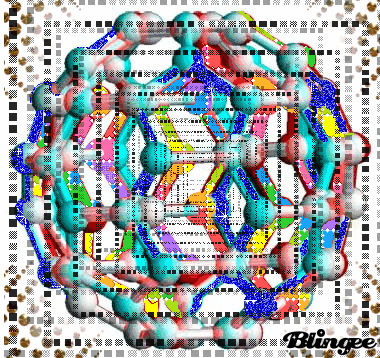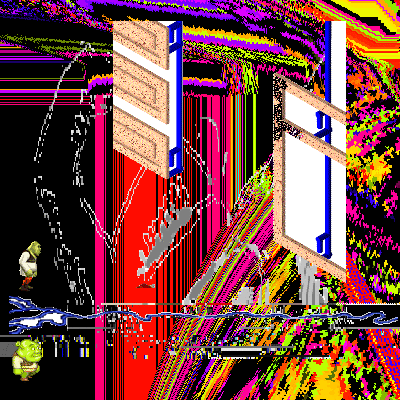The animated GIF (from Graphics Interchange Format) has made its comeback. An image file format created in 1987, GIFs were originally used by website designers to give otherwise plain webpages an illustrative touch. They were mostly small, naïf graphics – many would recall the 1990s “Under Construction” classic – to which animation could be added to make them “move.” Now, thanks to platforms like Tumblr, they have found a new life as material for drollery. Today, their most well-known iteration is the looping frames taken from films and television shows paired with humorous captions to crack a quick joke, like the Tumblr, What Should We Call Me. At a time when GIFs have infiltrated popular culture, artists, who’ve been creating GIFs for a while, are using them as a way to make in-jokes about the tropes that cycle through the Internet.
Ryder Ripps, 26, is one such artist, and dump.fm, which he co-founded, is one of the biggest platforms for a subculture of GIF-makers. A designer and conceptual artist based in New York, Ripps has been trawling what he calls “the other world,” since he was ten years old, and has been using GIFs for just as long. Drawn to the aesthetics of the early days of the web, he began Internet Archeology, a project in archiving and displaying the Internet’s visual relics. It was the sharing capabilities of Tumblr that made him realize “there were other weirdos like me,” who “were sharing hundreds of images a day.” In late 2009 Ripps started dump.fm with two friends working in the digital creative industries. According to the website’s brief explanatory text, it’s “an elite real-time image chat community.” Dump.fm currently has over 50,000 members. Its users – illustrators, animators, designers, art school graduates and students, advertising creatives and artists – combine images to explore both static and animated GIF forms to create visual puns. The website’s homepage – only members can view and participate in the on-going image-sharing forums – has a clean, white background and features a flickering array of mostly animated GIFs enclosed in rectangular frames. The visual language varies, from a pixelated lumbering crab monster to a clip from Seinfield with moving arrows superimposed over the top, rendered in a style that brings to mind early arcade game imagery. Ripps attributes the success of this online community to its ability to attract dedicated GIF-makers.
New York-based artist and blogger and dump.fm member, Tom Moody, has been creating GIFs since 2003, when “they were seen as a dot-com era relic associated with amateur and amateurish websites.” In conversation, Moody is quick to point out that the “hardcore” GIF community pronounces the term with the hard “G.” Many, programmers included, use the soft “G.” For GIF-makers, Moody says dump.fm is a great forum for experimentation and fast improvisation, and works as an “image aggregator” like Tumblr but much faster. “Kind of like slam poetry as opposed to formal readings,” he says. Poke around the website and you’ll find looping clips with text, or “memes” as they’re better known in what Moody calls “Internet shorthand.” But, for the most part, Dump.fm members rely solely on visuals to play subtly with humor. Within the dump.fm community, Moody says the approach to producing a GIF involves taking imagery or an idea from Internet culture and reflecting upon, amplifying or subverting an aspect of it through visual arrangement. There’s an endless dialogue of in-jokes, says Moody, revolving around the levels of technology.
Moody sees the “recent explosion” of GIFs going from the “underground” to catching on in popular culture and mainstream media, in outlets like NBC, as the function of a “historical accident.” Because almost every browser can read GIFs, and the much-touted HTML5 web takeover is yet to happen, GIFs “are a universal medium by default.” “This explosion was definitely not in the computer companies’ usual planned obsolescence script,” Moody says. The current browser readability, he says, is “like a gift given to people who are making stuff.”
Despite the availability of apps such as gifboom and gif shop, which have made GIF creators and sharers out of anyone with an iPhone, Moody prefers an old-school approach. He uses older, mostly free computer programs to manipulate found GIFs or create his own images, and often combines the two forms. While Moody links the enthusiasm for this medium to nostalgia for 1990s Internet culture, he says he simply prefers its low-tech, unfussy aesthetic. For him, the appeal is the economy of the form – creating something enthralling from “the fewest number of frames, [and] the least number of colors.” With GIFs, there’s “more emphasis on personal ingenuity and creativity.”
Curators are increasingly turning their attention to GIFs. In May an exhibition at the Photographer’s Gallery in London, entitled “Born in 1987: The Animated GIF,” featured the work of artists, including Ripps; many of them had never worked with the medium before.
Moody, who has exhibited his GIFs, is wary, however, about labeling
his creations “art.” Even though he may spend as much time making a GIF
as he would a painting, a GIF’s ephemerality means “it’s something that
everyone can own and own it very quickly.” He says: “I may consider my
GIFs to be art but I don’t police how they are seen or used. Part of the
fun is seeing where they turn up and what happens to them.”





